Exploring the Earliest Stages of Psychic Life
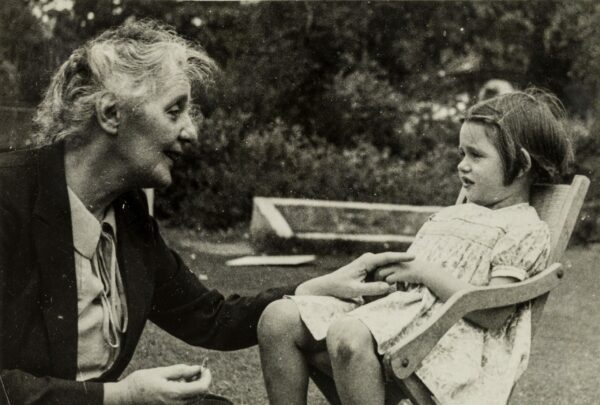
“The early ego lacks cohesion, and a tendency towards integration alternates with a tendency towards disintegration, a falling into bits… The result is an acute feeling of insecurity.”
1. Who Was Melanie Klein
Melanie Klein (1882-1960) was an Austrian-British psychoanalyst who pioneered the field of child analysis and developed a groundbreaking theory of the infant psyche. Extending Freud’s ideas, Klein mapped the earliest stages of psychological development, shedding light on the primitive anxieties, fantasies and defense mechanisms that shape personality from birth. Kleins work was foundational for many of the post Freudians and we use her work at Taproot Therapy Collective in Birmingham, Alabama.
Klein’s insights opened up new vistas for psychoanalytic theory and practice. Her concepts of the paranoid-schizoid and depressive positions, projective identification, and the role of unconscious fantasy transformed our understanding of infancy, offered new techniques for treating severe psychopathology, and paved the way for the British object relations school.
This article provides a comprehensive overview of Klein’s key ideas and their enduring influence. It traces her intellectual journey, the central threads of her thought, and the ways she expanded the frontiers of depth psychology. It invites us to enter the richly textured world of the infant psyche that Klein brought to light – and to contemplate its far-reaching implications for our lives.
Main Ideas
- Klein pioneered the psychoanalysis of young children, developing the technique of play therapy to access their unconscious inner worlds.
- She proposed that infants have a rudimentary ego from birth and experience complex unconscious fantasies and anxieties.
- Klein posited that the infant psyche is shaped by an interplay of two primary developmental positions: the paranoid-schizoid and the depressive.
- In the paranoid-schizoid position, the infant splits both self and object representations into all-good and all-bad parts to defend against anxiety. Projective identification is used to evacuate bad parts into the object.
- In the depressive position, the infant recognizes the mother as a whole object, experiences guilt and concern, and seeks to make reparation for aggressive fantasies. This sets the stage for integration of the ego.
- Klein saw the early relationship to the mother’s breast as the prototype for all later object relations. Envy, greed and paranoid anxieties around this primal object shape personality.
- She proposed that infants have an innate knowledge of the mother’s body, which becomes the arena for rich and terrifying unconscious fantasies (the combined parent figure). Managing these fantasies is central to development.
- Klein emphasized the importance of envy, which she saw as a constitutional factor intensifying oral aggression towards the primal good object (the breast). Excessive envy undermines the personality.
- Unconscious fantasies express themselves symbolically in children’s play, art, and speech. Analyzing these manifestations is key to child therapy.
- Kleinian theory expanded the scope of psychoanalysis to the treatment of severe psychopathology, including psychosis and borderline states. Her ideas provided the foundation for the British object relations school.
2. Biographical Context
Born in Vienna in 1882, Klein was the youngest child in a middle-class Jewish family. An unhappy childhood, marked by her beloved sister’s death and a distant mother, seeded the anxieties and depressions that would later inspire her groundbreaking theories.
In her twenties, Klein entered a loveless marriage that left her lonely and intellectually stifled. Three children in quick succession unleashed a torrent of dark fantasies and anxieties. Aimlessly drifting, she found direction when her husband introduced her to Freud’s early work. Captivated, Klein began devouring psychoanalytic literature, seeking a key to her inner turmoil.
In 1916, a depressed Klein entered analysis with Hungarian psychoanalyst Sándor Ferenczi, one of Freud’s most creative disciples. On Ferenczi’s suggestion, she began analyzing her own children, meticulously observing their play, gestures, and speech. This research blossomed into “The Development of a Child” (1919), Klein’s first psychoanalytic paper, marking her entry into Freud’s inner circle.
In 1921, Klein moved to Berlin to pursue her analytic work. There she encountered Karl Abraham, a warmly supportive mentor who shaped her intellectual trajectory. Abraham was pioneering a psychoanalytic approach to psychosis, exploring how the libido withdraws into the ego in schizophrenia. Klein began pondering how these primitive psychic states emerge in infancy, planting the seed for her later theories.
The 1920s saw Klein refining her play therapy techniques and devising a daring framework of the infant psyche. While classical analysis relied on verbal free association, Klein used play to access the child’s unconscious fantasies. Equipping her clinic with small toys she called her “tools,” Klein got down on the floor with her little patients, noting how they expressed repressed anxieties and desires through symbolic play. Klein’s ideas crystallized in “The Psychoanalysis of Children” (1932), a dense, groundbreaking work that shocked many classical Freudians. In a radical move, she proposed that infants have a rudimentary ego from birth, bristling with sadistic fantasies towards the mother’s body. This ego is splintered between feelings of love and hate, and tortured by primitive anxieties of disintegration. By bringing these dark corners of the psyche to light, Klein believed, an analyst could trace the roots of neurosis and psychosis.
In 1926, fleeing rising antisemitism, Klein settled in London, where her work sparked heated controversy. In the “controversial discussions” of the 1940s, she clashed with Anna Freud in a series of historic debates over child analysis and pre-Oedipal development, with the British Psychoanalytic Society splitting into Kleinian, Freudian and “Middle” Group factions.
Despite the turmoil, Klein’s London years were hugely productive. In papers like “Notes on Some Schizoid Mechanisms” (1946) and “Envy and Gratitude” (1957), she detailed her theories of the paranoid-schizoid and depressive positions, projective identification, and the primal role of envy in shaping relations to the good object. Her ideas inspired a loyal following, forming the nucleus of the Kleinian school.
Klein practiced and taught until her death in 1960, leaving a formidable legacy. By daring to explore the darkest anxieties of infancy, she birthed a revolutionary model of the psyche, one that emphasized the ego’s struggle to integrate destructive and loving impulses. Her insights opened up new possibilities for treating severe mental illness, and inspired a generation of analysts to venture into the uncharted territory of primitive experience.
3. Core Concepts
3.1 The Paranoid-Schizoid Position
Perhaps Klein’s most innovative concept is the idea that infants pass through two crucial positions – the paranoid-schizoid and depressive – in the first year of life. These are not discrete developmental stages but fluctuating states of mind, each with its own constellation of anxieties, defenses and object relations.
The paranoid-schizoid position, which Klein saw as the infant’s psychological baseline in the first three to four months, is characterized by a cluster of primitive anxieties, splitting mechanisms, and projective fantasies. In this position, the fragile ego feels constantly threatened with annihilation, both from the death instinct raging inside and malevolent forces imagined without. To stave off this unbearable anxiety, the infant splits both internal and external objects into idealized “good” and persecutory “bad” parts.
The mother’s breast, which Klein posited as the infant’s first object relation, becomes the template for this process of splitting. In states of frustration and fear, the breast is experienced as a terrifying, vengeful object, intent on starving or poisoning the infant. In moments of blissful satisfaction, it is felt to be an infinitely bountiful, life-giving presence. The infant’s rudimentary ego is similarly split between an idealized “good self” identified with the gratifying breast, and a “bad self” infused with aggression, envy and fear.
To keep this annihilatory dread at bay, the infant resorts to omnipotent fantasies of controlling and destroying the bad objects felt to be sources of danger. These fantasies are shaped by the infant’s dominant bodily experiences – suckling, biting, devouring, eliminating. The infant imagines tearing the bad breast to shreds with greedy, sadistic attacks, yet also fears that these assaults will invite its terrible retaliation.
This impossible situation is assuaged through projective identification – a primal defense whereby bad parts of the self are split off and projected into external objects to be controlled. Thus the infant’s aggression and fear is perpetually being evicted into the mother, transforming her into a persecutor who must then be destroyed. For Klein, this sets up a vicious cycle whereby aggression breeds more aggression, creating an increasingly menacing object world. At the same time, good parts of the self are also projected out, to safeguard them from the infant’s destructiveness. This depletes and weakens the ego.
The hallmark of the paranoid-schizoid position is the lack of a unified sense of self or other. Objects are part-objects, split and distorted by primitive fantasy. The ego, splintered by its own aggression, lacks coherence and stability. Persecutory anxiety reigns. Identity is fluid, shifting with the projection and introjection of psychic contents.
Yet this fragmentary state is also the crucible of psychic growth. By constantly projecting out and reinternalizing aspects of self and other, the infant begins to forge the rudiments of a stable identity. If the mother receives these projections without retaliation, processing and modulating them with her love, the infant gradually introjects a good object that can soothe its anxieties from within. This lays the foundation for an integrated self.
Indeed for Klein, the healthy personality is forged in the cauldron of the paranoid-schizoid position – through countless splittings and manic defenses, through the endless cycle of destruction and restoration of the object in fantasy. It is a perilous journey, one that goes awry in psychosis, yet one that must be risked for the ego to cohere. In mapping this dark voyage, Klein shed light on the earliest, most perilous stages of psychic life.
3.2 The Depressive Position
Around four to six months, the infant enters what Klein called the depressive position – a psychological watershed marked by greater integration of the ego, the emergence of ambivalence, and a dawning awareness of the mother’s personhood. With increased cognitive maturation, the infant begins to perceive that the good and bad breasts are the same object, that love and hate are directed towards the same person. This recognition raises a new set of anxieties and psychic tasks.
In the depressive position, the infant realizes that its sadistic attacks were directed at the very object it loves and needs for survival. It becomes aware of its dependence on the mother, and fears that its aggression may have destroyed her. Guilt, loss and a desire to make reparation surge to the fore. The infant now strives to preserve and protect the mother, to keep her intact as a source of safety in an uncertain world.
This sets the stage for a momentous transformation – from partial to whole object relations. The breast is no longer felt to be just a part-object, idealized or denigrated, but a facet of a whole person with an independent existence. The mother is recognized as a separate individual, with her own thoughts, feelings and desires. She is experienced as an object that can be both loved and hated, both lost and regained.
This shift generates what Klein called depressive anxiety – a profound fear of losing the loved object through one’s own destructiveness. Unlike the annihilatory dread of the paranoid-schizoid position, depressive anxiety is tinged with guilt, remorse, and a sense of responsibility for the object’s welfare. The infant feels that it has damaged the mother with its greed and aggression, and that it must now repair the harm done.
Thus the depressive position inaugurates a new relationship to ambivalence. Love and hate can now be experienced towards the same object, not just split between idealized and denigrated part-objects. This capacity to tolerate mixed feelings is a crucial milestone, one that allows for greater stability of the ego.
Nonetheless, depressive anxiety can also become overwhelming, triggering defenses that stave off the pain of loss and guilt. The infant may try to magically restore the damaged object through manic reparation, or it may deny its dependence through a narcissistic withdrawal. It may resort to splitting once again, as a bulwark against the recognition of ambivalence.
For Klein, working through the depressive position is a lifelong task, one that is never fully completed. Even the healthy adult ego will occasionally regress to paranoid-schizoid states under stress. Yet the depressive position remains a crucial fulcrum of development – the foundation for empathy, concern, and the capacity to love. In Klein’s model, our very humanity rests on the struggle to make reparation, to restore the good objects we have damaged in fantasy, and to internalize a stable sense of care.
3.3 Envy, Greed and Gratitude
While Freud saw the Oedipus complex as the nucleus of the neuroses, Klein located the wellspring of psychopathology in the infant’s earliest anxieties and defenses around the mother’s breast. Chief among these was envy, which Klein came to see as a critical factor shaping both normal and abnormal development.
For Klein, envy is the angry feeling that another person possesses and enjoys something desirable – the envious impulse being to take it away or spoil it. She posited that envy is unconsciously directed towards the feeding breast, the child’s first object of desire. The infant experiences the breast as having an unlimited flow of milk and love, which it keeps for its own gratification. This fantasy of being excluded from the primal object’s bounty arouses intense oral-sadistic urges to attack and destroy the breast.
Klein distinguished envy from greed and jealousy. Greed is the desire to possess all the goodness of the object for oneself, whereas jealousy involves the relation to at least two people, and stems from the fear of losing what one has. Envy, in contrast, is a destructive attack on the very source of life and creativity. It aims not just to possess the object’s goodness, but to spoil and devalue it.
For Klein, envy is an expression of the death instinct, an innate destructive force that the infant must grapple with from birth. She saw it as a constitutionally determined emotional response, more primal than jealousy or hatred. If excessive, envy can undermine the personality at its root, crippling the capacity for gratitude, trust and love.
In the throes of envy, the infant harbors resentment towards the breast for its imagined withholding, and seeks to attack it out of a sense of grievance and rage. This, however, raises persecutory anxieties, as the infant fears retaliation from the damaged object. To defend against this anxiety, it resorts to splitting, projective identification, and other schizoid mechanisms. It may idealize the breast one moment, and denigrate it the next.
Excessive envy thus sets up a vicious cycle – the more the object is attacked, the more persecutory it becomes, increasing the need for defensive splitting. This corrodes the ego’s capacity to integrate good and bad experiences, and to develop a stable sense of self and other. It can result in a paranoid-schizoid state where envy and greed seem to color all object relations.
For Klein, the only antidote to envy is gratitude. If the infant has repeated experiences of being loved and satisfied by the breast, it comes to feel that it has been given a precious gift. This primal experience of largesse becomes the model for all later expressions of gratitude, generosity and love. It allows the infant to accept the goodness of the object, and to give goodness in return.
In Klein’s view, the capacity for gratitude is proportional to the intensity of the infant’s envy. The greater the envy, the harder it is to establish a good relation to the breast, and the more difficult it is to experience gratitude. Conversely, the more the infant can accept the mother’s love without spoiling it, the more it can develop trust, empathy and concern.
Klein saw gratitude as a pivotal factor in the working through of the depressive position. Gratitude allows the infant to tolerate ambivalence, to acknowledge that the loved object is also the hated object, and to make reparation for the fantasied attacks on the mother’s body. It forms the basis for what Klein called “the love of the good object” – an enduring sense of inner security that sustains the personality throughout life.

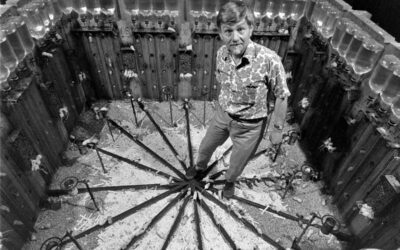









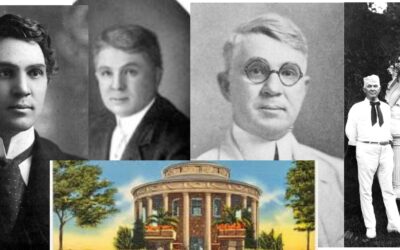
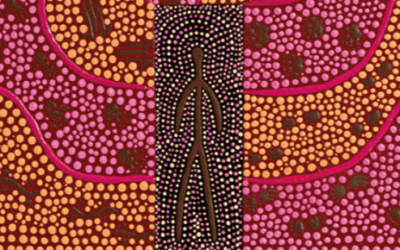
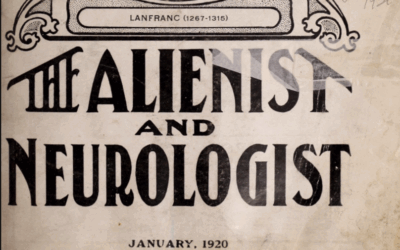


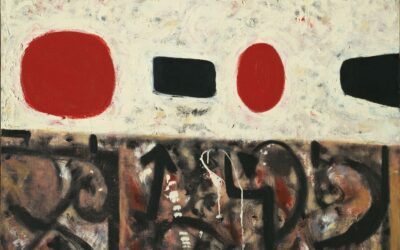
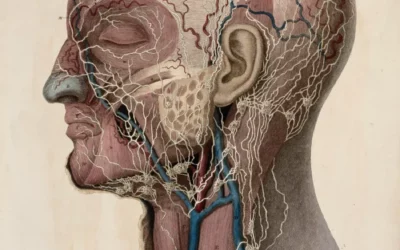








0 Comments